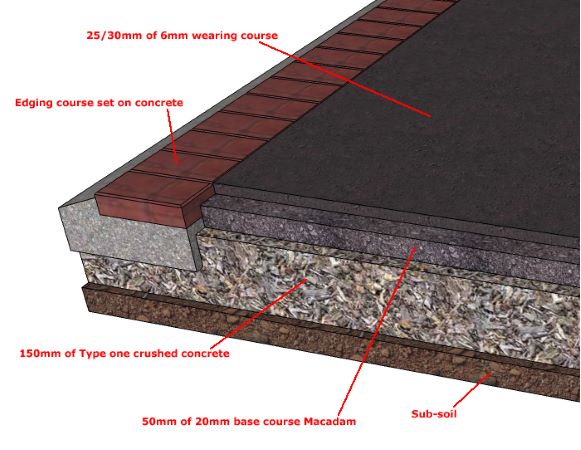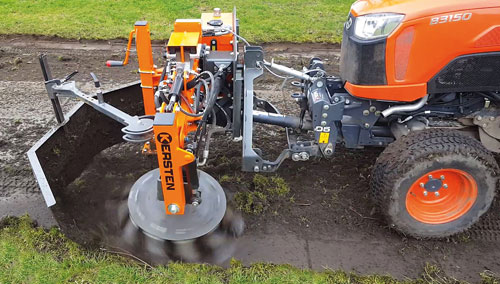Preventative and Remedial Maintenance on Tarmac and Concrete
In this blog article we look at how to prevent tarmac and concrete from becoming slippery, covered in weeds or retaining water.
The Performance Properties of Tarmac and Concrete Surfaces
Tarmac and concrete are both commonly used in roads and service yards, which have heavy traffic moving on them all day. In some ways these are the simplest surfaces to maintain. However, we have seen a lack of maintenance cause serious damage. Especially on pavements next to grass or other vegetation. Tarmac and concrete must;
1. provide a smooth surface for supporting traffic
2. Provide good grip for vehicles and pedestrians
3. Look attractive
Tarmac and Concrete are usually laid by heavy machinery on top of an extremely compacted hard-core base. Drainage is achieved by allowing the water to run off the surface into gullies and drains.

Picture Credit;http://www.colordrives.co.uk/tarmac/tarmac-cross-section/
What are the Common Maintenance Problems on Tarmac and Concrete?
Due to the non-permeable properties of the surface, compaction is not really an issue on this surface unless there is a major issue with the base.
Detritus is the largest threat to tarmac and concrete. The gullies and pavement edges provide the perfect place for detritus to gather and rot down. This provides an ideal growth medium for moss, weeds and extension of the grass verge. If not treated this will block up the gullies and cause Flooding where the water cannot run off. Untreated pavement edges will result in reduced width for pedestrians, prams and wheelchairs.
Roots from weeds can penetrate the surface and form cracks in their attempt to find more fertile ground. This can result in crumbling and surface deterioration. Once the surface has begun to deteriorate in this way, more segments will crumble away and migrate across the surface, leaving potholes and cracks.

What is the Best Preventative Maintenance Regime on Tarmac and Concrete ?
Treatment is a fairly simple process of regular maintenance with a powered sweeper and collector. This will remove the detritus before it rots down and weeds get a chance to become established. The edges of pavements can be treated with a light weed brush to prevent turf from encroaching on the pavement. The loose debris can then be collected by a powered sweeper and collector. A gully brush makes light work of sweeping debris trapped in kerb edges into the path of the main brush where it can be collected easily.
What Remedial Action can we Take if the Tarmac or Concrete is covered in weeds?
If left untreated, moss and weeds will become prevalent; especially in gullies and pavement edges. Verges will encroach upon pavement space. In some cases we have come across pavement that has been reduced by as much as 18 inches with solid soil and turf, and moss or other weeds covering the entire pavement. A powerful Kersten weed brush is required to remove this material from the surface, after which the loose debris can be collected by a powered sweeper and collector.
Hopefully it is now clear to see that a good maintenance plan is the most effective way to take care of your hard surfaces and keep them performing at their best. Simply spraying weed killer after the weeds have emerged, or getting rid of surface water with a pump is treating a symptom of a problem not the cause.
"Sweeping the surfaces regularly for maintenance will remove dirt and thereby reduce the possibilities for weed establishment" (Hein, 1990; Hansen et al., 2004; Schroeder & Hansson, 2006). But I must emphasize the need for a “REGULAR” maintenance plan. The more often you can sweep, rake and clean - the better your surfaces will retain their performance.
Like this Blog? Find out more by reading our surface maintenance handbook;
https://kerstenuk.com/files/Kersten-surface-maintenance-handbook-catalogue.pdf
Great information on footpath maintenance